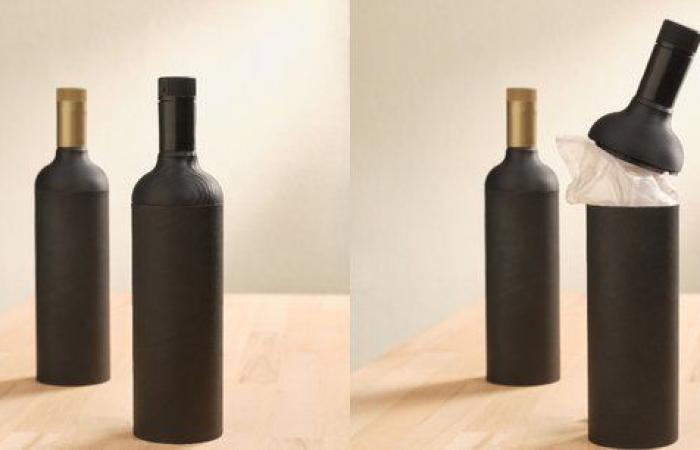Apart from being opaque, the cardboard bottle of Green Gen looks like any 75 centiliter glass bottle. Riding on the success of « BIB »the « bag in box » previously available in 3, 5 or 10 liters, the wine is in fact contained in a plastic bag placed inside the cardboard container. The technology is therefore proven, only the format changes. “The main advantage is that it weighs only 130 grams, three to ten times less than a glass container, argues Aline Rogeon, research and development director at Green Gen. And when we know that the glass bottle represents 21% of the carbon footprint of the wine industry, this is no small asset, particularly for export! »
Carbon footprint: the Burgundy wine industry wants to reduce the weight of its bottles
Another advantage: the two materials, cardboard and plastic, are recyclable separately. “It is above all necessary to analyze the entire life cycle of the product to know if this packaging is truly virtuous, in particular its impact on water, air or biodiversity”, insists Medhi Besbes, head of the wine and spirits market at Adelphe, a subsidiary of the eco-design and reuse specialist Citéo. Already at the origin of the first linen bottles two years ago, Green Gen already plans to produce 2.8 million of its cardboard bottles in 2025. Two thirds have already been reserved, assures the company which has taken over the premises of a former army logistics site in Bergerac to set up its workshop. It now employs 14 people.
Exit through innovation
The main obstacle to the marketing of this new generation packaging: its price. With a cost price of 0.80 euros, it is approximately twice as expensive as a glass bottle. “It’s also a way to stand out in a gloomy period, answers Aline Rogeon. The situation in the wine industry is worrying and it is through innovation that it will undoubtedly be able to get out of it. » This cardboard bottle will also only be intended for wines to be consumed quickly. Impossible, in fact, to keep great vintages in a plastic bag for years! The company ensures that the concept arouses interest in France but also abroad, in Canada, Australia and the Nordic countries.
“Any approach that allows less use of natural resources, such as silica for glass, is going in the right direction, for her part, greets Anne-Laure Ferroir, director of the Terra Vitis federation of viticulturists and winegrowers. On the CSR aspect (corporate social responsibility, Editor’s note)the lighter the containers, the less likely employees who carry boxes all day will break their backs. This is really the type of initiative that we encourage, but the product must be economically viable for the company. » It therefore remains to convince the consumer to change their purchasing habits, and to stop thinking that “the heavier the bottle, the better the wine inside will be”. Not easy since, according to a survey published last year by Terra Vitis, three quarters of those questioned said they were still attached to the traditional glass bottle of wine.
Eco in Pack raises three million euros in the race to reuse glass bottles






